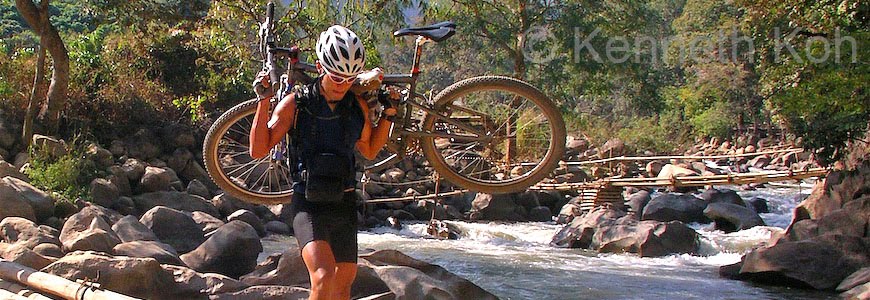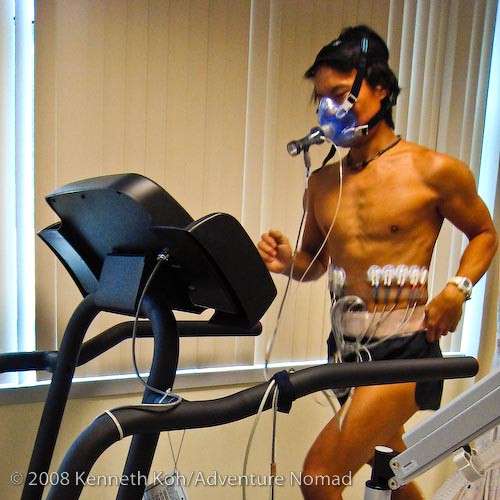 Dizzying. Canon XT/350D, Canon 10-22mm at 10mm, 1/6 f/4.5, ISO 1600, flash.
Dizzying. Canon XT/350D, Canon 10-22mm at 10mm, 1/6 f/4.5, ISO 1600, flash.
If you are on a tight budget (and I mean rock-bottom TIGHT), and want a DSLR for travel and adventure, I have a suggestion for you: The Nikon D40 or Canon Rebel XT 350D paired with a Sigma 18-200mm F3.5-6.3 DC lens. These can be found on the used market and won’t set you back much more than a point-and-shoot.
Both camera bodies are quite similar with regard to cost, weight, battery life and build quality. However, the Canon XT/350D is an 8MP camera, and the Nikon D40 only 6MP. The XT/350D also has 7 Autofocus Points and the D40 just 3. I have the Canon XT/350D, but if I were buying for this to use with this particular lens, I have a slight preference for the Nikon D40 over the Canon XT/350D. Here’s why:
Crop FactorThere’s a slight difference in the focal lengths you get with the Sigma 18-200mm on different bodies. The Canon XT/350D uses a 1.6 crop factor, which means the lens will give you an equivalent FOV of 29-320mm. The Nikon D40 uses a 1.5 crop factor, and so you’ll get equivalent FOV of 27-300mm. I prefer to have the slightly wider field of view with the Nikon.
 Nikon D300 with Nikkor 18-200mm VR (left) with the smaller and lighter Canon XT/350D and Sigma 18-200mm (Right).Image Noise
Nikon D300 with Nikkor 18-200mm VR (left) with the smaller and lighter Canon XT/350D and Sigma 18-200mm (Right).Image NoiseFor your money, you get the lightest 18-200mm lens currently available (405g). What you don’t get is Image Stabilization or Vibration Reduction*, which means you’ll need to crank up the shutter speed and/or ISO to get a sharp image. A camera that produces cleaner images (less noise) at higher ISOs has an advantage with this lens, and the Nikon D40 has cleaner images than the Canon XT/350D (Source: http://www.dpreview.com/reviews/nikond40/page17.asp).
Auto-ISOWhen you are ready to move out of the green fully Automatic shooting mode, this will come in handy. The Nikon D40 has it, and the Canon XT/350D doesn’t. It’s not really a hassle to change the ISO for the lighting conditions, but you’ve got to remember to do it. For some adventure travelers, having the camera set the ISO automatically is a boon. For example, say you’re in Tibet exploring a monastery and you duck into a dark temple. It’s easy to remember to change up the ISO, because you’ll know you’ve forgotten when your first shot inside has an unusually long shutter speed. But when you walk back out into bright daylight, it’s easy to forget to change it back. Higher shutter speeds sound normal, and don’t clue you in to change down the ISO, which means by the time you realize your error, you’ve unnecessarily shot a bunch of grainy, high ISO shots in bright daylight.
* Sigma makes an image stabilized version of this lens, the 18-200mm f3.5-6.3 DC OS. It weighs 610g, and costs quite a bit more.
 Nikon D700 image from www.nikond700.com
Nikon D700 image from www.nikond700.com
 Nikon D700 image from www.nikond700.com
Nikon D700 image from www.nikond700.com Treadmill VO2 Max test
Treadmill VO2 Max test A leaked(?) image from a (supposed) Nikon D700 brochure
A leaked(?) image from a (supposed) Nikon D700 brochure Running the Henderson Waves Bridge
Running the Henderson Waves Bridge Click map to view large
Click map to view large The Canopy Walk
The Canopy Walk Approaching the Anderson Arch bridge
Approaching the Anderson Arch bridge The Forest Walk
The Forest Walk Photo of the Apple iPhone 3G from the Apple website
Photo of the Apple iPhone 3G from the Apple website  Dizzying. Canon XT/350D, Canon 10-22mm at 10mm, 1/6 f/4.5, ISO 1600, flash.
Dizzying. Canon XT/350D, Canon 10-22mm at 10mm, 1/6 f/4.5, ISO 1600, flash. Nikon D300 with Nikkor 18-200mm VR (left) with the smaller and lighter Canon XT/350D and Sigma 18-200mm (Right).
Nikon D300 with Nikkor 18-200mm VR (left) with the smaller and lighter Canon XT/350D and Sigma 18-200mm (Right). Trekking the Annapurna Circuit. Nikon D300, 10.5mm, 1/400 f/20, ISO 200.
Trekking the Annapurna Circuit. Nikon D300, 10.5mm, 1/400 f/20, ISO 200. Crossing Thorung La. Nikon D300, 10.5mm, 1/800 f/14, ISO 200.
Crossing Thorung La. Nikon D300, 10.5mm, 1/800 f/14, ISO 200. Donkey train crossing a bridge. Nikon D300, 10.5mm, 1/320, f/9, ISO 200.
Donkey train crossing a bridge. Nikon D300, 10.5mm, 1/320, f/9, ISO 200. Once upon a time in Pokhara. Nikon D300, 10.5mm, 1/125, f/13, ISO 200.
Once upon a time in Pokhara. Nikon D300, 10.5mm, 1/125, f/13, ISO 200.